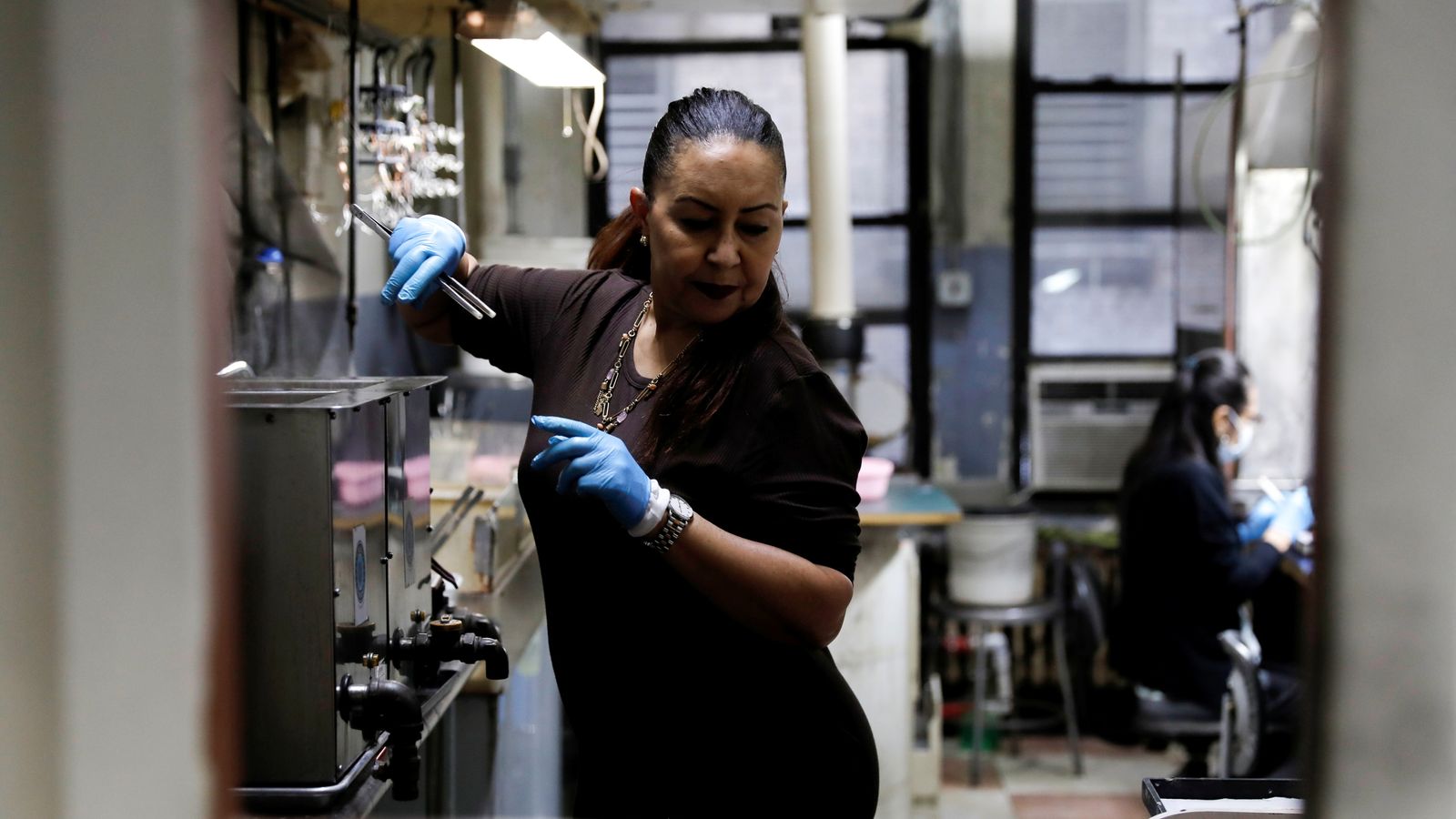The US has reported its first drop in economic output since the second quarter of 2020.
The US economy shrank at 1.6% annual pace in the first three months of the year, according to the latest figures from the country’s commerce department.
It follows a strong 6.9% expansion in the last financial quarter of 2021.
The commerce department had estimated last month that the economy contracted 1.5% in the first quarter but it made its final estimate on Wednesday and downgraded the figure.
Among the factors was consumer spending, which failed to reach expected levels – up by just 1.8% instead of the 3.1% forecast.
Consumer spending accounts for about two-thirds of US economic output.
Spending on large goods such as cars, and recreational items was revised lower, while businesses accumulated inventories at a higher rate than expected.
US Capitol riots: Surprise last-minute hearing announced by committee investigating January 6 riot
‘They’re all terrified’: Patients ‘panic’ at Mississippi’s last abortion clinic
Protests follow US Supreme Court’s move to overturn abortion protection as clinics begin to close
But some analysts remained upbeat.
Scott Hoyt, a senior economist at Moody’s Analytics in West Chester, Pennsylvania, told Reuters: “It is extremely unlikely the economy is in recession now, however, despite the decline in first-quarter GDP and apparent weakness in output growth in the current quarter.
“Job growth remains strong, investment is growing, both households and business have strong balance sheets.”
Like many world economies, the US consumer is enduring the effects of soaring inflation, pushed up by an increase in the price of essentials such as energy.
Earlier this month the US Federal Reserve increased interest rates by three-quarters of a percentage point – the sharpest hike in 28 years.
The benchmark rate now stands at a range of 1.5% to 1.75%, levels that have not been seen since before the coronavirus pandemic began.










